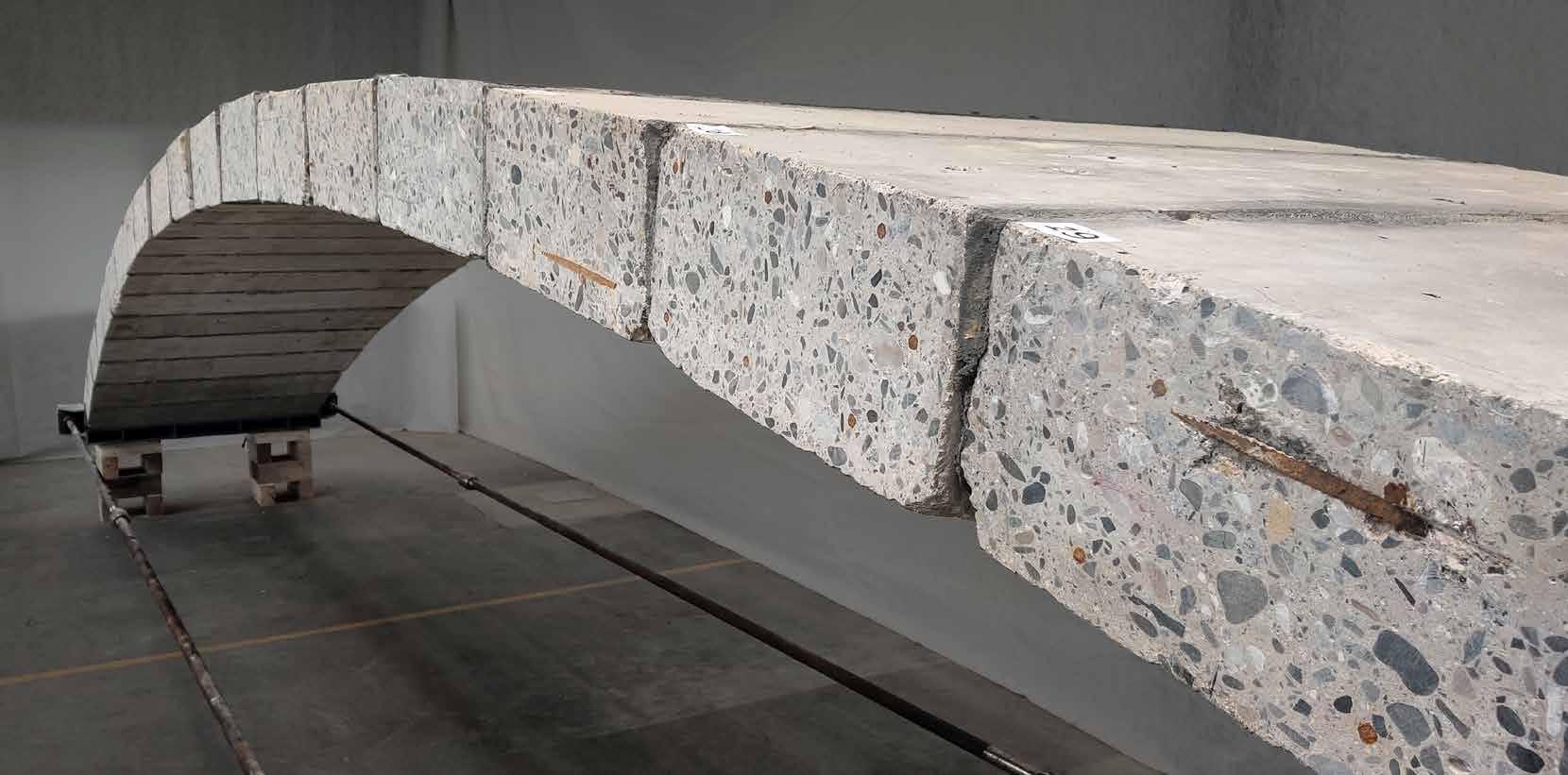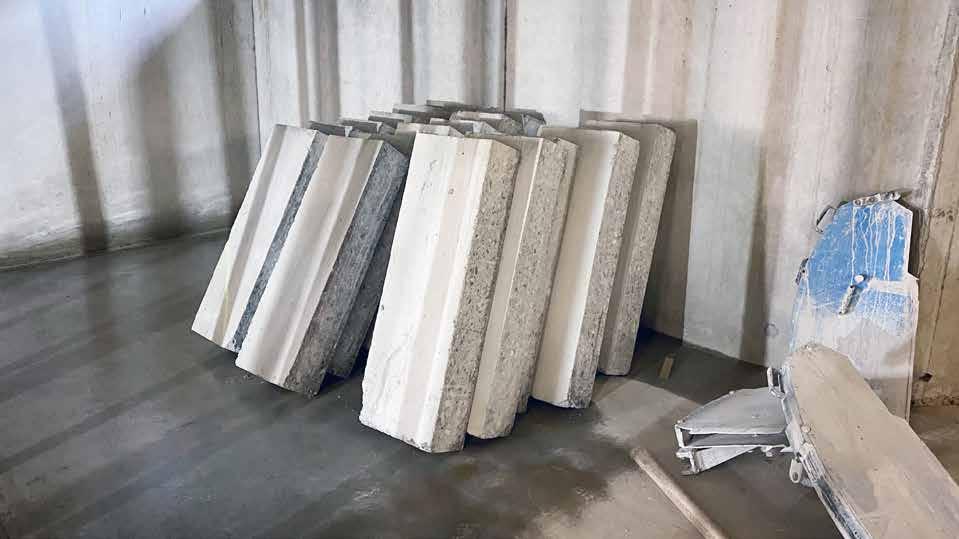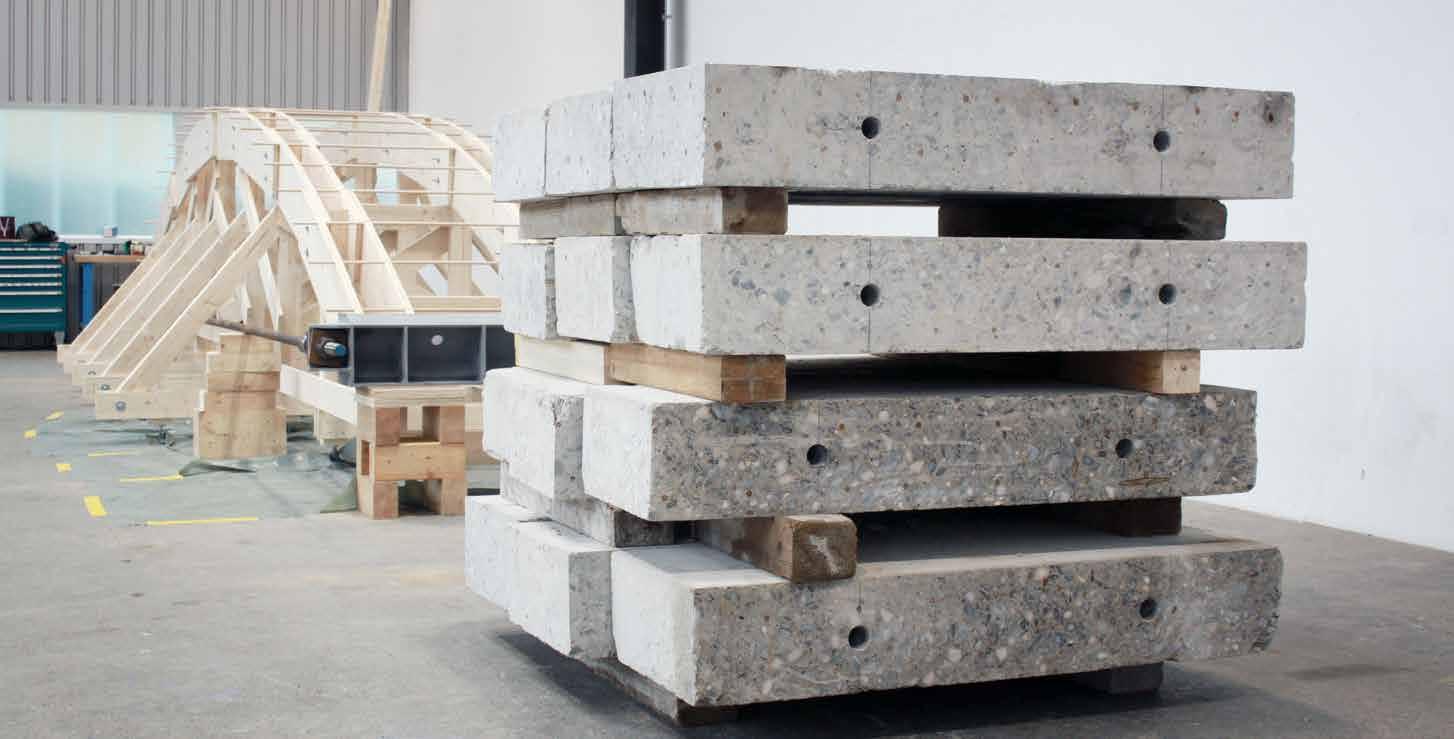
2 minute read
Building out of concrete without pouring concrete
from IM20215EN
Photo: EFPL
Researchers of the science and technology institute EPFL (Lausanne Switzerland) have built a footbridge prototype using reinforced-concrete blocks from walls of a building being renovated. The blocks were cut into individual pieces on site and assembled into a prestressed arch. This project, which marks the first time concrete has been reused in this way, is part of an initiative to substantially shrink the construction industry’s carbon footprint by adopting a circular economy approach. The footbridge was inaugurated at a ceremony at the Smart Living Lab in Fribourg on 11 October.
Advertisement
Reinforced concrete is a fantastic material and for that reason it is used worldwide and on a large scale. But once the concrete floors and walls are no longer needed, the best option is to crush it. In the best case scenario, concrete waste grit is reused as an additive in new concrete. But to make that, new cement is also needed, and it is precisely this cement that creates a significant CO2 footprint. Why not reuse the old concrete in the form of whole components? And that is exactly what Scientists of EPFL Structural Exploration Lab (SXL) had in mind. They developed a new proof of concept by which they build new concrete systems without producing new concrete, avoiding the use of new cement. It was demonstrated by the prototype pedestrian bridge, a concrete structure that was built quickly and efficiently, without the use of fresh concrete.
For concrete to be reused effectively, new design methods are needed that are based on exploiting existing concrete sections, rather than the conventional


Photo’s: EFPL
approach of pouring fresh concrete in line with each project’s specifications. The catch is that the properties of existing sections can vary and are not always known ahead of time. To help engineers employ these new methods, SXL recently developed a computer program that automates the process of selecting reclaimed elements from a given stock and minimizes a new structure’s carbon footprint. The research team then called in the expertise of the company Diamcoupe, specialized in drilling, sawing and controlled demolition. Diamcoupe had been commissioned to renovate a building erected less than ten years ago; this renovation site was the perfect opportunity to source viable blocks of concrete. Diamcoupe was able to cut the concrete into the sizes which were needed and to drill holes through them for the prestressing cables. These cables were provided by Freyssinet and used to build the arch. The engineers were thus able to obtain 20 cm-thick concrete blocks for the footbridge. They added mortar in places to smooth out the slight differences in dimensions, which are inevitable anytime objects are reused. According to the team arches are actually the ideal structure for repurposing concrete blocks, since the material is only subject to compression forces.








